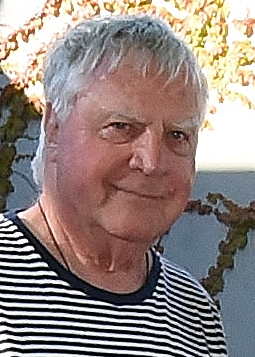
Auckland Art Gallery Toi o Tāmaki is the principal public gallery in Auckland, New Zealand. It has the most extensive collection of national and international art in New Zealand and frequently hosts travelling international exhibitions.

Shane William Cotton is a New Zealand painter whose work explores biculturalism, colonialism, cultural identity, Māori spirituality, and life and death.
Dame Louise Etiennette Sidonie Henderson was a French-New Zealand artist and painter.

Sofia Minson is a contemporary New Zealand oil painter of Māori, Swedish, English and Irish descent.

Hamish Henry Cordy Keith is a New Zealand writer, art curator, arts consultant and social commentator.
Philip Anthony Clairmont (1949–1984) was a New Zealand painter.

Justin Summerton is a New Zealand artist and writer, who lives in Dunedin, New Zealand.
Dean Leonard Buchanan is a New Zealand-based abstract and landscape painter. He has exhibited widely throughout New Zealand, as well as in Chile, the US, and Japan. His first solo show in 1978 was at the Outreach Gallery in Ponsonby, Auckland. He has also been involved in many group shows – the first at the age of 19, the "Young Contemporaries" at The Auckland City Art Gallery in 1971.
Warwick Henderson, is a New Zealand gallerist, art collector, art fair pioneer and author of "Behind the Canvas – An Insider's Guide to the New Zealand Art Market" and "The Fascinating History of Toys and Games around The World".
Warwick Stephen Freeman is a New Zealand jeweller.

New Vision Gallery was a contemporary craft and art gallery operating in Auckland, New Zealand in the 1950s, 1960s and 1970s.

Maureen Robin Lander is a New Zealand weaver, multimedia installation artist and academic. Lander is a well-respected and significant Māori artist who since 1986 has exhibited, photographed, written and taught Māori art. She continues to produce and exhibit work as well as attend residencies and symposia both nationally and internationally.

Chris Bailey is a Māori sculptor and carver. Bailey studied Māori language and Māori material culture at the University of Auckland under Dante Bonica. He lives and works on Waiheke Island.
Emily (Emare) Karaka is a New Zealand artist of Māori descent Her work is recognised for "its expressive intensity, her use of high key colour, and her gritty address of political issues related to Māori land rights and the Treaty of Waitangi".

Arnold Manaaki Wilson was a New Zealand artist and educator of Māori descent. He is regarded as a pioneer of the modern Māori art movement.
This is a timeline of the feminist art movement in New Zealand. It lists important figures, collectives, publications, exhibitions and moments that have contributed to discussion and development of the movement. For the indigenous Māori population, the emergence of the feminist art movement broadly coincided with the emergence of Māori Renaissance.
Philippa Blair is a New Zealand artist. Her works are held in the collection of the Auckland Art Gallery Toi o Tāmaki, Museum of New Zealand Te Papa Tongarewa and the University of Auckland art collection.

John Bevan Ford was a New Zealand Māori artist and educator who started exhibiting in 1966. He is a leading figure in contemporary Māori art with art held in all large public collections of New Zealand. In 2005 Ford received the Creative New Zealand Te Waka Toi Kingi Ihaka Award.
Buck Loy Nin (1942–1996) was a New Zealand artist influential in the development of contemporary Māori art in New Zealand. His landscape paintings have been included in survey exhibitions of contemporary Māori art including Te Waka Toi: Contemporary Maori Art that toured the United States in 1992 and Toi Tū Toi Ora: Contemporary Māori Art curated by Nigel Borrell and opened in 2020. Selwyn Muru called him 'Buck Nin the Mythmaker'.
Selwyn Peter Webb was a New Zealand art dealer and gallery director. He was a supporter and promoter of art, and particularly contemporary New Zealand art, for over sixty years. Webb's work spanned public art museums, publishing and the founding of the Peter Webb Galleries and Webb's auction house.









